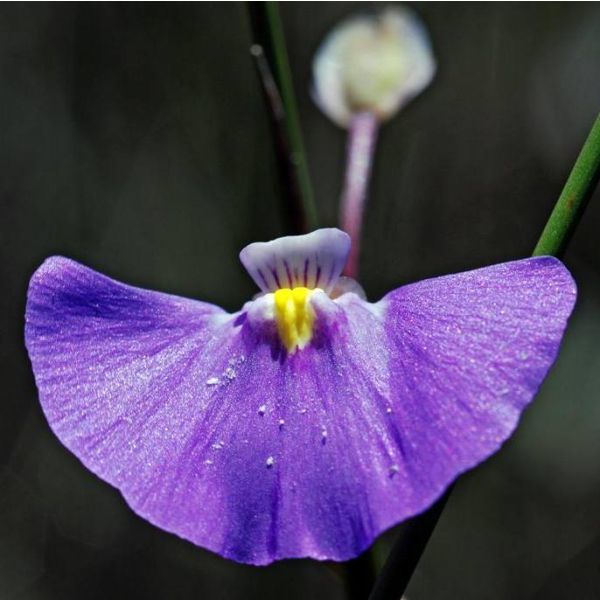Utricularia Volubilis Seeds (Twining bladderwort Seeds)
Utricularia Volubilis Seeds (Twining bladderwort Seeds)
It bears large violet flowers on twining scapes to 90 cm. Its filamentous leaves can be up to 30 cm long and its pigmented traps up to 5 mm large.

Delivery
All orders shipped with UPS Express.
Always free shipping for orders over US $250.
All orders are shipped with a UPS tracking number.
Returns
Items returned within 14 days of their original shipment date in same as new condition will be eligible for a full refund or store credit.
Refunds will be charged back to the original form of payment used for purchase.
Customer is responsible for shipping charges when making returns and shipping/handling fees of original purchase is non-refundable.
All sale items are final purchases.
Help
Give us a shout if you have any other questions and/or concerns.
Email: contact@domain.com
Phone: +1 (23) 456 789
Availability: Out of stock
SKU
Utricularia Volubilis
Utricularia volubilis is a wonderfull annual plant. This submerged aquatic species from Southwestern Australia represents a botanical rarity.
It bears large violet flowers on twining scapes to 90 cm. Its filamentous leaves can be up to 30 cm long and its pigmented traps up to 5 mm large. The large traps can be seen on short stalks attached to the rosette. Traps are often held on the tips of some of the grass like leaves. Both of these types of traps are suspended in the water. The largest traps of all are attached to the underground stolons and trap preys which live in this substrate.
The bladder-trap is unique to the Utricularia, giving them their nickname of Bladderwort. Utricularia has no true root system. They form creeping or floating, thin, hair-like stems that extended away from the main body of the plant. The bladder-traps are held on these stems. The traps are underground and are too small to hand feed. So, it has to catch it's own microscopic prey. Thin, filament-like hairs protrude from the trap door. These serve as guides to send the prey toward the door. These plants use low pressure inside the chamber vs. high pressure outside. When a bug activates the hairs, the door opens quickly, forcing the victim into the low-pressure digestion area. The water is pumped out and the mulcilage seal is re-established. The plant now secrets digestive juices to break down the captured prey and absorb the mineral rich fluid. Trapping usually occurs within 1/50 of a second. It is believed that glands found around the closed entry may also secrete an attractant that may aid in luring prey.
Hardiness zone 11, (4øC/40øF) in Winter. Optimum temperatures are 18-26 øC, it can tolerate 5 øC. The species prefers slight shading. In captivity, they grow well in a standard 1:1 peat moss/sand mix. Like other carnivorous plants, they do require pure water and can be killed by fertilizer in the soil. It grows in deep water.
| Label | Utricularia volubilis |
|---|---|
| Common name | Twining bladderwort |
| Genus | Utricularia |
| Species | Utricularia volubilis |
| Germination | The seeds are really tiny. Sow the seeds directly on the surface of your moist but not soaked soil mix. Do not cover them with any medium. Cover the top of the pot with clear plastic so the humidity will remain high, place them in an area with real nice strong light and keep the temperature around 25øC / 76øF. When you see some tiny plants starting to sprout, slowly open the top of the pot, a little each day, so that the new seedlings don't go into shock from the humidity being lowered too quickly. Germination usually occurs in a few weeks, but it can take longer, don't give up. Make sure that it gets good air circulation. |
| Price View | Price Range |

